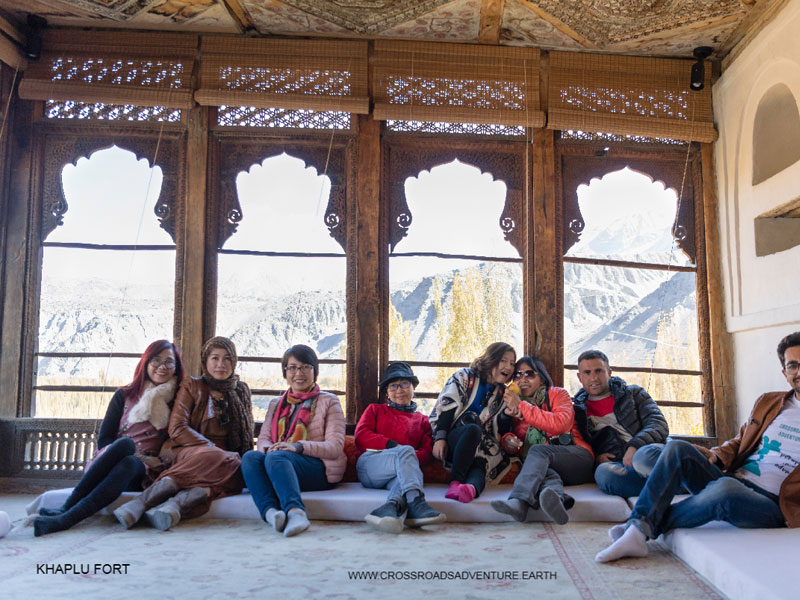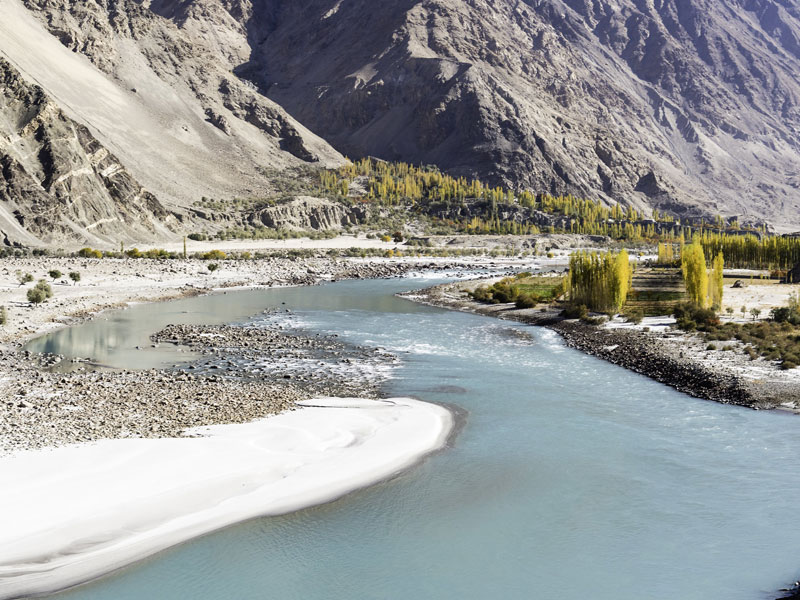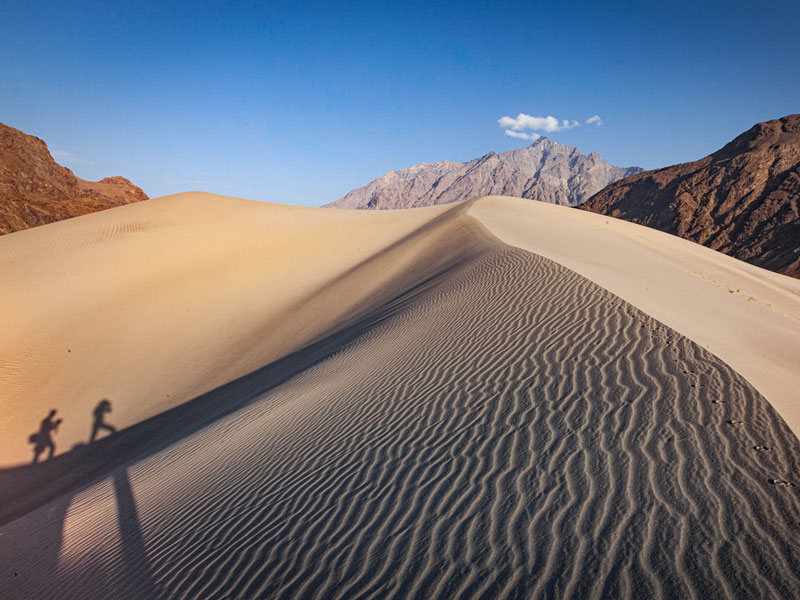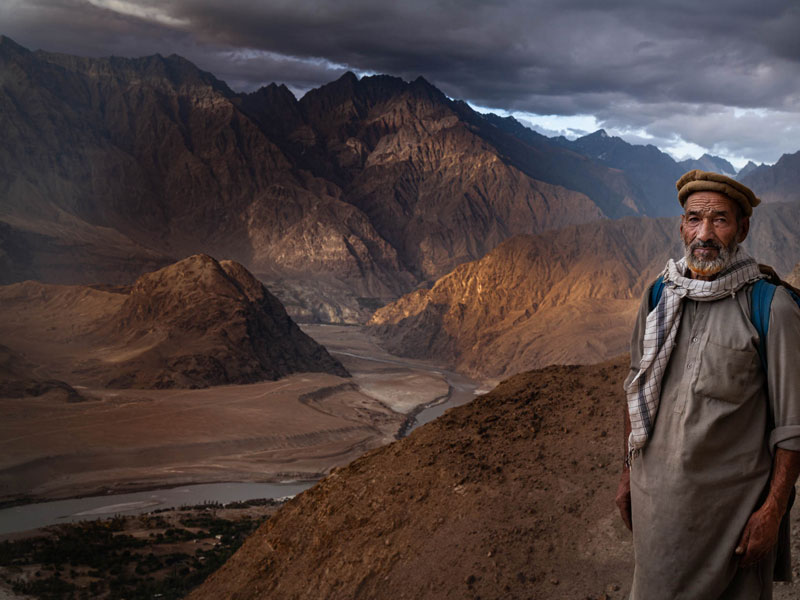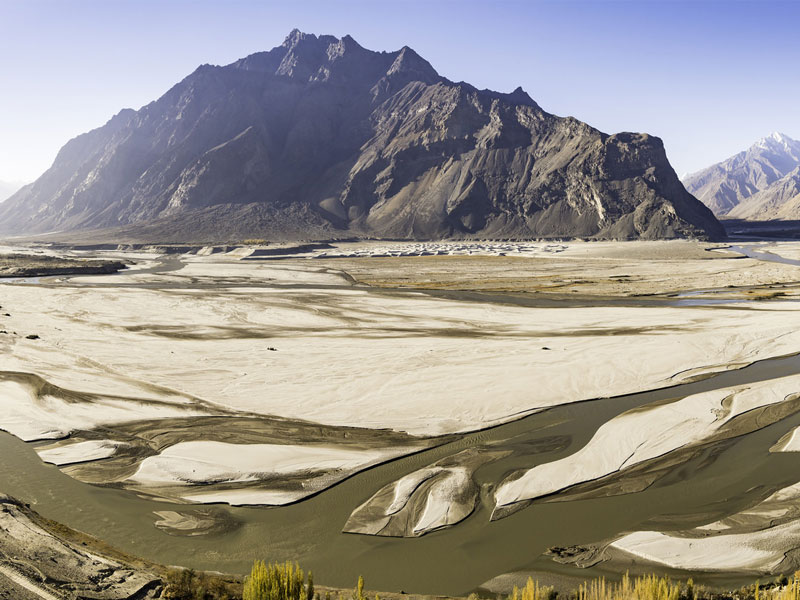Gilgit Baltistan Heritage Tour
A Brief Overview of the Trip
This Tour is specially designed for foreigners who wish to see the beauty of culture and breathtaking locations. The tour plan consists of 10 days, which covers the most significant areas of Gilgit Baltistan. We shall explore all the adjacent areas of Gilgit and the Hunza and, most importantly, Skardu and other beautiful locations of the great region of northern Pakistan.
We will start our journey from the Capital City of Islamabad. We will explore the Capital city and then take a flight to Skardu. The exceptional region of Skardu offers panoramic landscapes and a pleasant climate. Whatsoever corner you visit, it cast a spell on its visitor through its immense beauty. In Skardu, we shall see the Khaplu Fort, Chnaqchan Mosque and Shigar Valley. We will then explore Gilgit City. Hunza is our prime spot for this tour plan; we will visit the fantastic and colorful places of Hunza. Notably Eagles’ Nest, Altit- Baltit Fort, Karimabad, Nagar Valley, Attabad Lake, Gojal Valley and other nearby areas enriched in culture and history.
How would you be Entertained on this Trip?
- Get an exposure visit to Shigar Fort which is a heritage site that truly reflects the diversity of Nature. A 17th century Palace / Fort of Baltistan was then converted to a Museum and hotel by the Serena Hotel.
Have you got the artistic taste? Explore the beautiful architecture of the ancient Khlingrong Mosque restored by the Aga Khan Culture Services and UNESCO Award winner, Amburique Mosque and both the Khanqahs in Shigar village, similarly visit Kharpucho Fort which dates to the 16th Century built by the ruler of that time Ali Sher Khan.
- Village walk at Khaplu village which is a sprawling village perched on the slopes of the steep mountains that hem in the river. Khaplu fort was awarded the UNESCO Asia-Pacific Heritage Awards 2013 for cultural heritage conservation.
- Guided tour of Altit Fort. located above a high vertical cliff, with its front side dominating the Hunza River. The Fort was built by the Mirs (ruling family) of Hunza as a display of power to the Mir’s of Nagar (twin state) and has stood tall in front of Karakoram since the 11th century. This fort has received the UNESCO Asia-Pacific Award for Cultural Heritage Conservation in 2011.
- Guided tour of Baltit Fort Located on a large rocky outcrop at the base of the Ultar Glacier. The view of Hunza and Nagar Valleys from the roof is superb. Founded in the 8th CE, it has been on the UNESCO World Heritage Tentative list since 2004.
- Take a boating tour of the Attabad lake. The lake was created in January 2010 as a result of the Attabad Disaster which blocked the Hunza and the Karakoram highway which resulted in the formation of this lake. Due to this disaster, the people of Gojal were cut off from the rest of the world resulting in food crises, health and economic issues
Is it the Desired Trip for You?
- The security of the region under consideration is good, but self-care is needed.
- You might face climatic repercussions during the tour.
- Domestic flights during the trip are subject to weather, in case of flight cancelation there can be changes in the hotel accommodation as they are subject to availability.
- The accommodation is on twin sharing basis
- Parts of your trip go above 2800 meters where it is common for travelers to experience some adverse health effects due to the altitude.
A Brief Upshot:
- Starting Point
- Ending point
Primary Destinations.
- Theme
- Group Age
Group Size.
- Islamabad
- Islamabad
Islamabad, Skardu, Gilgit, Hunza, Gojal
Walking & Culture experience
20 to 60
- 5 to 15
Services included in the package
- Invitation letter and other supporting documents
Airport transfers
- Accommodation
- Breakfast
Entrance tickets
- Transportation and fuel
Service of experienced English-speaking guide ((accommodation, food, wages)
- Expenses of driver (accommodation, food, wages)
- All toll taxes
- All parking charges
Services not included in the package
- International flights
Meals
- Extra at hotels like drinks, laundry, phone calls, and room services,
- Insurance liability
- Tips, items not mentioned above
Trip Highlights:
Get a chance to see the spectacular passu cones at Passu village.
Short walk to 750-year old renovated Chaqchan Mosque.
Visit Shangrilla lake at Sakrdu, one of its kind in the entire region.
Visit Taxila a fascinating city with a 2000-year-old history of Buddhism. Taxila was an important Buddhist and Hindu center of learning from the 5th century BC to the 2nd century. It is an important archaeological site and in 1980. was declared a UNESCO World Heritage Site.
Visit Taxila Museum-The museum is home to a significant and comprehensive collection of the Gandharan civilization.
A scenic journey through beautiful valleys of Gilgit-Baltistan.
- Interaction with locals of Baltistan and Hunza valley.
Visit the land of mountains, Gilgit-Baltistan
Opportunity to see the conjunction point of all three greatest mountain ranges Hindukush, Himalaya and Karakoram.
Journey on the Karakoram highway (considered to be the 8th wonders of the world)
Traveling with experienced local staff members.
Meal with a local family at Hunza valley.
Drive on adventurous mountainous roads where nature is still at its fullest.
Visit Karimabad Bazar to see the handicrafts by the Hunza people.
Eagles nest to view the snow-capped mountains and the whole of Hunza valley, the best spot for sunrise and sunset and Hunza.
Get a taste of local living by spending time among the mountain communities in the Gilgit-Baltistan region of Pakistan.
An opportunity for you to experience and refresh your perspective about these areas and about Pakistan.
Itinerary:
Short Description of Significant Areas
ISLAMABAD:
Lying in the laps of Margalla Hills, Islamabad is the capital territory and a beautiful city of Pakistan. Several hiking paths end at Daman– e– Koh; a picnic spot with a splendid view of the entire city and accompanied by a restaurant Monal at the top of the hills. Islamabad includes the massive modernist Faisal Mosque and even the Rawal and Khanpur Dams with a lake view.
SKARDU:
Skardu is a city located in Gilgit−Baltistan. It serves as the capital of the Skardu District. It is situated at an elevation of nearly 2,500 meters at the confluence of the Indus and Shigar Rivers. The city is an important gateway to the eight-thousanders of the nearby Karakoram mountain range. The Indus River running through the region separates the Karakoram from the Himalayas.
GILGIT CITY:
Gilgit is the capital city of Gilgit–Baltistan. It is located in a broad valley near the confluence of the Gilgit River and Hunza River. It is a major tourist destination in Pakistan, serving as a hub for trekking and mountaineering expeditions in the Karakoram mountain range. It was once a major center for Buddhism. It was also an important stop on the ancient Silk Road. It serves as a major junction along the Karakoram Highway with road connections to China as well as the Pakistani cities of Skardu, Chitral, Peshawar, and Islamabad. Currently, it serves as a frontier station for the local tribal areas. The city’s economic activity is mainly focused on agriculture, with wheat, maize, and barley as the mainly-produced crops.
RAKAPOSHI VIEW-POINT :
Ghulmet, a small at the foot of the Karakoram Mountains, attracts tourists from all over the world as it provides the closest view of the Rakaposhi top. Rakaposhi is the only mountain in the world, which rises straight from beautifully cultivated fields to the height of 25,550 feet. Many restaurants and tourist resorts serve foreign and local guests with local, national, and Chinese cuisines. Besides its charming scenes, Ghulmet Nagar is also famous for the Tomb(Shrine) of Hazrat Syed Shah Wali(RA), who came from Afghanistan in the 16th century to preach Islam.
HUNZA VALLEY:
Hunza Valley is one of the most incredible and stunning places to visit in Pakistan. Hunza Valley is known as the heaven on earth. The valley of Hunza always stuns the visitors with its awe-inspiring nature and beauty. Duiker Top in Hunza Valley offers some incredible panoramic views. Hunza Valley is also very rich in culture. Karimabad, a town in Hunza Valley, is home to 600– year– old forts of Altit and Baltit and the Old Ganesh Settlement on the ancient Silk Road. According to a commonly known legend, the people of this valley are descendants of the five lost soldiers of the army of Alexander the Great.
GULMIT– GOJAL:
Moving towards upper Hunza Valley, also called Gojal shares borders with Central Hunza in the South, China in the northeast, and Afghanistan in the northwest. Gulmit is a centuries-old historic town in Gojal with mountains, peaks, and glaciers. It is a tourist spot and has many historic places, hotels, shops, and a museum including Ghulkin Glacier. This region also provides stunning views of Passu Cones. In the highest point of the Karakoram mountains of Gojal is located the village of Sost, famous for Khunjrab Pass, which is the Pakistan– China border.
Gallery:
Reviews:
Book Tour Now:
Starting from
$3000


